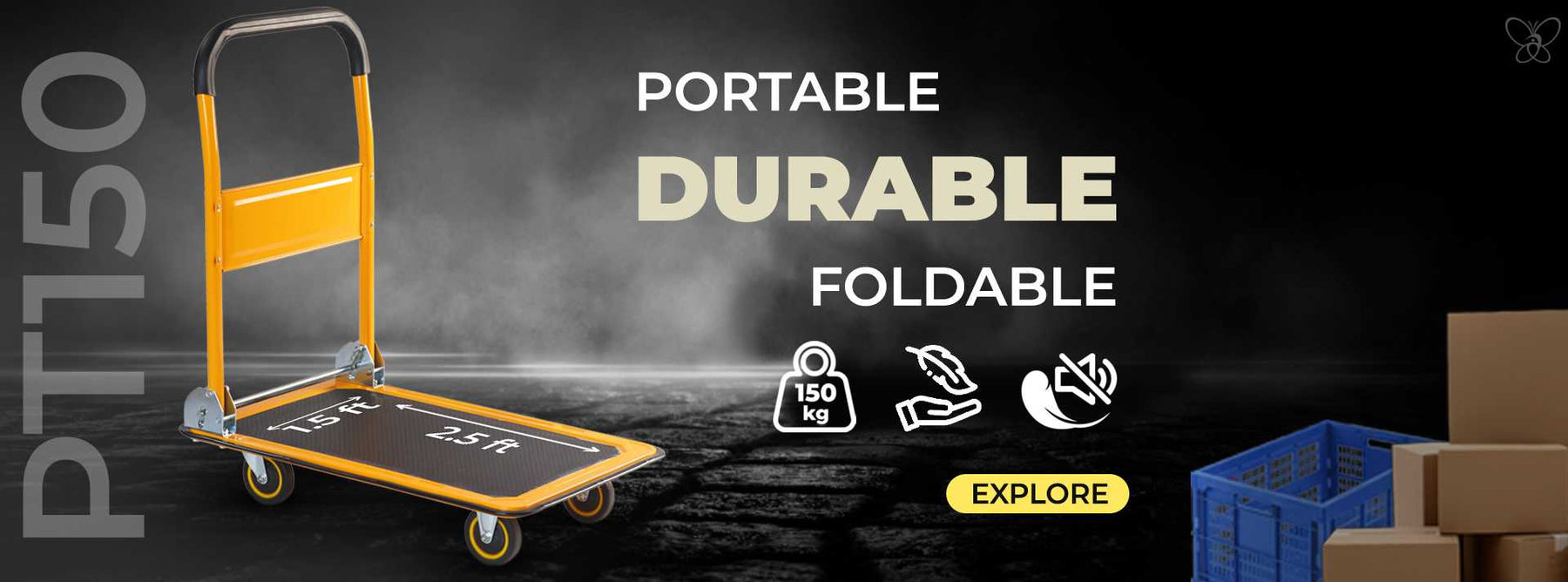
The Construction of Platform Trolleys: Built for Durability and Efficiency – Step by Step Guide
Introduction to Platform Trolleys:
Industrial Grade Heavy Duty Platform Trolleys are essential tools in material handling in numerous industries, providing a convenient and efficient solution for transporting heavy loads. Their construction plays a vital role in ensuring durability, stability, and optimal functionality. In this blog, we will explore the key components and construction techniques involved in building platform trolleys, highlighting their importance in meeting the demands of modern material handling.
Robust Frame Design: The Foundation of Strength
The foundation of a well-constructed industrial platform trolley lies in its frame. The frame serves as the backbone of a platform trolley, providing stability and load-bearing capacity. It is typically constructed using robust materials such as steel, aluminum, or stainless steel. These materials offer exceptional strength and durability to withstand the rigors of industrial environments. Welding techniques are commonly used to join the frame components, ensuring structural integrity and long-lasting performance.
Platform: A Sturdy Surface for Secure Transport
The platform is the flat surface where materials or objects are placed for transportation. It is crucial to select a suitable platform material that can withstand the intended load capacity and environmental conditions. Common platform materials include plywood, steel, or high-density plastic. These materials offer durability, resistance to wear and tear, and ease of cleaning. The platform should be designed to withstand the anticipated load capacity, incorporating reinforcement elements such as crossbars or ribs for added strength. The platform of the material handling trolleys may have additional features like anti-slip surfaces, raised edges, or customizable dimensions to ensure the secure transportation of items.
Ergonomic Handle Design: Maneuverability and Control
Handles are an integral part of a platform trolley, enabling operators to maneuver and control the trolley with ease. They are typically constructed from materials such as tubular steel, aluminum, or PVC. Ergonomic designs in industrial trolleys are often incorporated to provide a comfortable grip and reduce strain on the operator's hands and arms. The handles are securely attached to the frame, ensuring stability and allowing for smooth movement even with heavy loads. It is important to consider handling height and positioning to accommodate different operators and promote proper posture during use.
High-Quality Wheels and Casters: Smooth Mobility
The wheels and casters of a platform trolley determine its mobility and maneuverability. These components are carefully selected based on the trolley's intended use and load capacity. Common wheel materials include rubber, polyurethane, or nylon, offering excellent traction and durability. Swivel casters are incorporated to enhance maneuverability, enabling easy navigation around obstacles and tight spaces, while fixed wheels provide stability during straight-line movements. The size and configuration of the wheels and casters depend on factors such as load capacity, terrain, and the environment in which the trolley will be used. These wheels are designed to provide excellent traction, minimize noise, and withstand the demands of various surfaces.
Safety Features in Platform Trolleys:
Safety is paramount in the construction of platform trolleys. Professional-grade trolleys often incorporate safety features such as brakes. These brakes can be foot-operated or hand-operated, providing operators with the ability to secure the trolley in place when loading or unloading heavy items. The braking system ensures stability and prevents accidental movement, mitigating the risk of workplace accidents.
Additional Features in Platform Trolley:
To meet the diverse needs of different industries, professional-grade platform trolleys often offer customization options and additional features. These can include adjustable platforms to accommodate various load sizes, removable side rails or panels for added load security, folding mechanisms for space-saving storage, or load-securing mechanisms such as straps or latches.
Conclusion:
The construction of platform trolleys involves careful consideration of the sturdy frame, durable platform, ergonomic handles, and well-chosen wheels and casters all contributing to their overall performance and longevity. Each component is engineered to ensure optimal performance, operator comfort, and workplace safety. By understanding the construction process behind material-handling platform trolleys, businesses can make informed decisions when selecting high-quality trolleys that meet their specific requirements, ultimately enhancing their material-handling operations. Whether in warehouses, manufacturing facilities, or retail environments, well-constructed platform trolleys are indispensable assets that drive productivity and success. Inaithiram offers premium quality material handling products Foldable metal platform trolley of 150kg capacity and a Foldable metal platform trolley of 300kg capacity with all the features and additional safety features at affordable cost in India. Our durable and user-friendly equipment is made with high-quality materials and craftsmanship, ensuring reliability. We provide excellent customer support and after-sales service.



